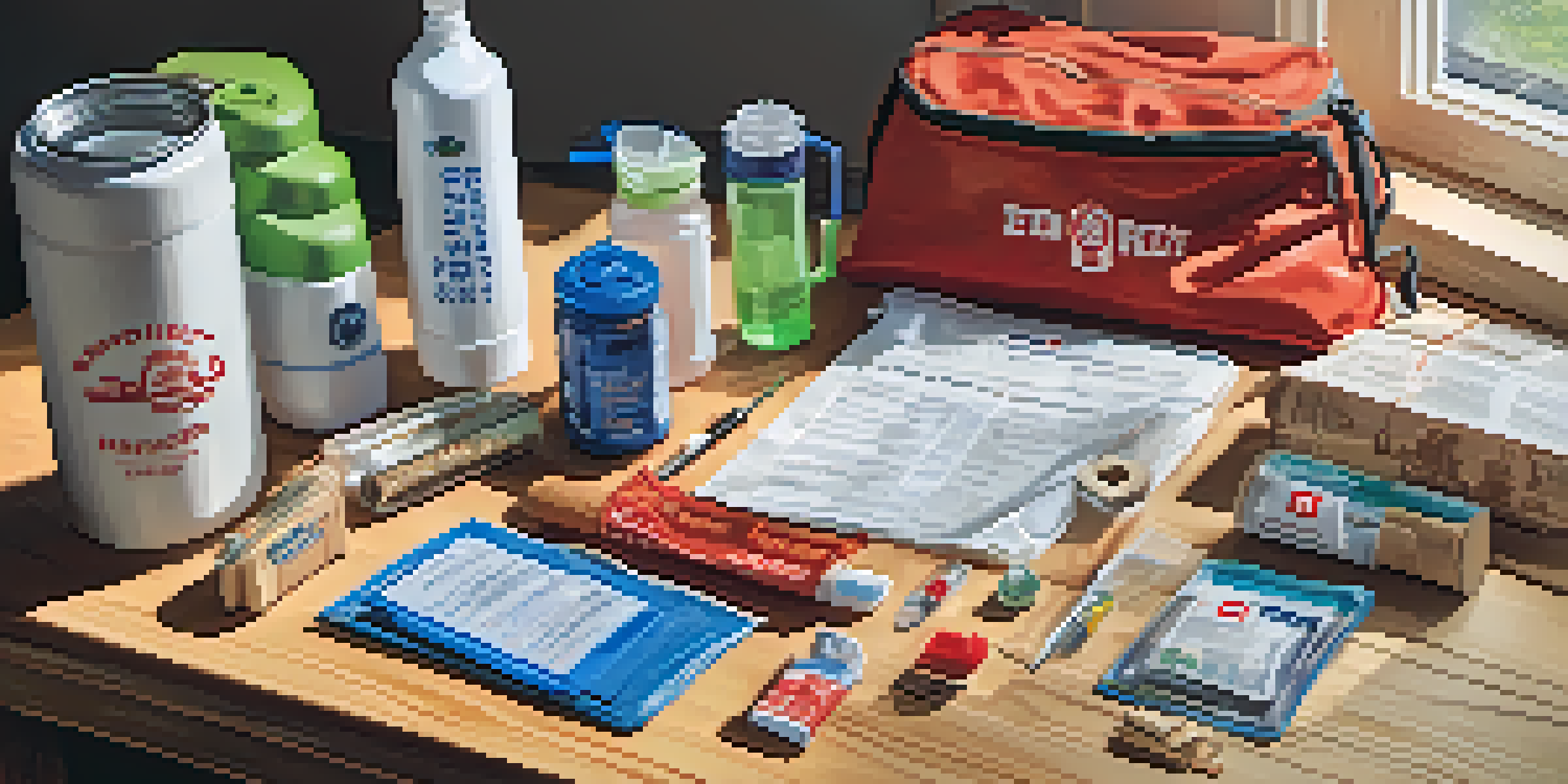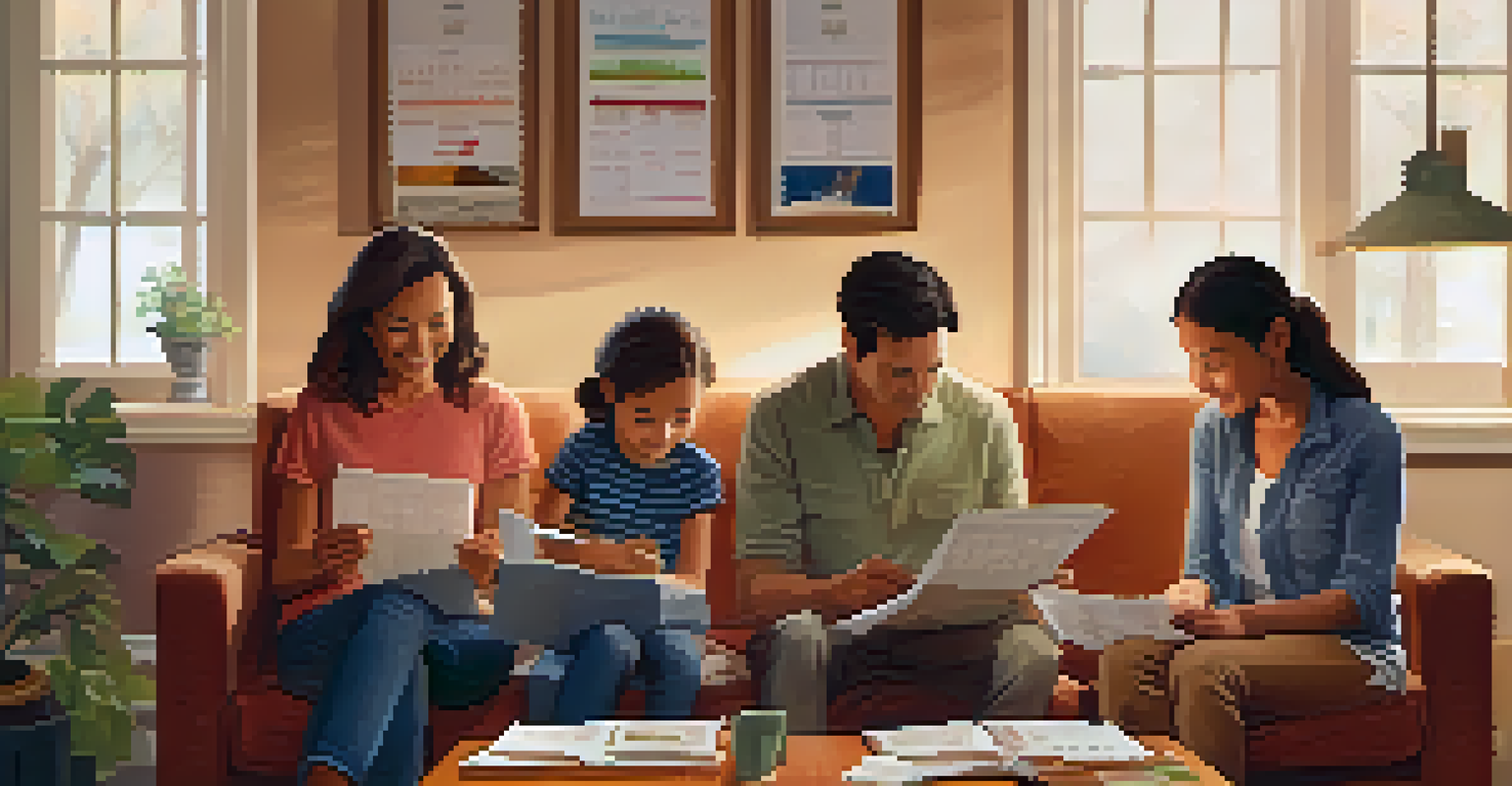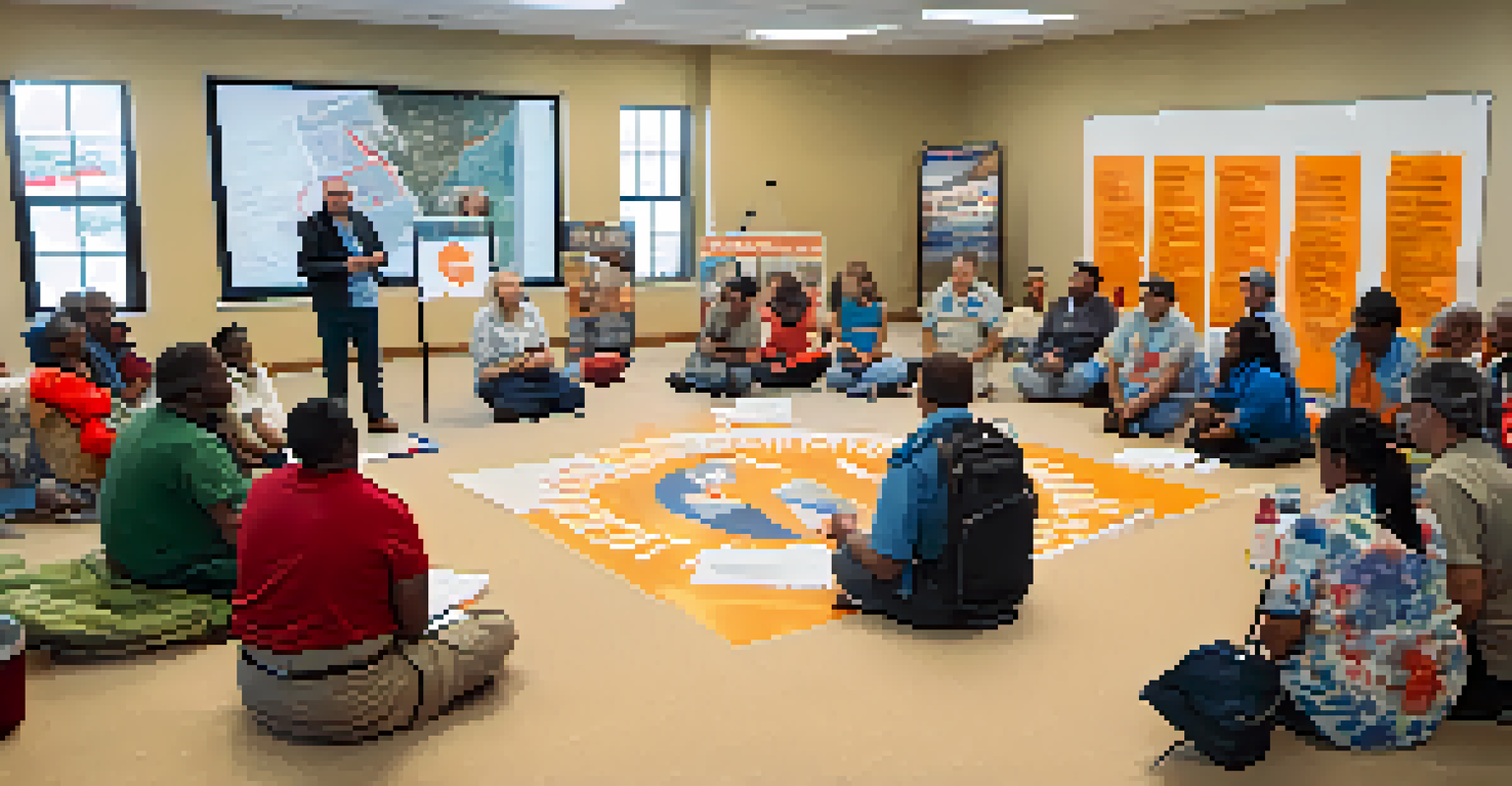Essential Disaster Preparedness Kits for San Jose Residents

Understanding the Importance of Preparedness Kits
Disaster preparedness kits are essential for ensuring your safety during emergencies. In San Jose, where various natural disasters can occur, having a well-stocked kit can make a significant difference. Think of it as your personal insurance policy—one that you can grab on the go if disaster strikes.
By failing to prepare, you are preparing to fail.
These kits help you respond quickly and effectively in situations like earthquakes, fires, or floods. By being prepared, you not only protect yourself but also reduce the stress on local emergency services. It's all about being proactive rather than reactive.
Additionally, preparedness kits can bring peace of mind. Knowing you have the supplies you need can help alleviate anxiety during uncertain times. Remember, it’s not just about the items in the kit; it’s also about how prepared you feel.
Essential Items for Your Disaster Preparedness Kit
When assembling your disaster preparedness kit, start with the basics: water, food, and first aid supplies. The general recommendation is to have at least one gallon of water per person per day for at least three days, along with non-perishable food items. Think granola bars, canned goods, or anything that doesn't require cooking.

Don’t forget about important documents like insurance papers and identification. Storing these in a waterproof bag can save you a lot of hassle later. It’s also wise to include medications and any personal hygiene items you might need.
Importance of Preparedness Kits
Having a well-stocked disaster preparedness kit is crucial for safety during emergencies, especially in areas prone to natural disasters.
Lastly, consider adding tools and supplies for communication and light. A flashlight, batteries, and a portable phone charger can be lifesavers when the power goes out. By thinking through your kit, you can ensure you’re ready for anything.
Tailoring Your Kit for Family Needs
Every family has unique needs, so it’s essential to tailor your disaster preparedness kit accordingly. For example, if you have young children, include extra supplies like diapers or baby formula. This ensures that everyone's needs are met during stressful times.
An ounce of prevention is worth a pound of cure.
Don’t forget about pets! If you have furry friends, include food, water, and any necessary medications for them too. Remember, they rely on you for their safety just as much as your family does.
Additionally, think about including items that cater to the elderly or individuals with disabilities in your household. By customizing your kit, you ensure that everyone is prepared and can respond effectively in an emergency.
The Role of Local Resources in Preparedness
San Jose offers numerous resources to help residents prepare for disasters. From local workshops on emergency preparedness to community resource centers, these organizations can provide valuable information. Engaging with local emergency services can also help you stay informed about the specific risks in your area.
Moreover, consider connecting with your neighbors. Building a community network can enhance your overall disaster response. Neighbors can share tools, resources, and even skills that might come in handy during emergencies.
Tailoring Kits to Family Needs
Customizing your disaster kit to meet the specific needs of your family, including children and pets, ensures everyone is prepared.
Finally, don't overlook local government websites and social media channels. They often post updates, safety tips, and alerts that can be crucial for your preparedness efforts. Staying connected with these resources means you’re always in the loop.
Regularly Updating Your Disaster Kit
One common mistake is assembling a disaster preparedness kit and then forgetting about it. It’s essential to review and update your kit at least once a year. Check expiration dates on food and medications, and replace any items that may have been used or damaged.
This is also a great time to reassess your family’s needs. As children grow or circumstances change, your kit should evolve too. Keeping it updated ensures that you are always prepared for any situation that may arise.
Consider setting a recurring reminder on your calendar. Treat it like a seasonal check-up—something that’s just part of staying healthy and safe. By regularly updating your kit, you keep your preparedness efforts fresh and effective.
Creating a Communication Plan for Emergencies
In addition to your physical preparedness kit, it’s vital to have a communication plan in place. Discuss with your family how you will communicate in case of a disaster. Designate a meeting point if you get separated, and ensure everyone knows how to reach each other.
Consider using text messaging as a primary means of communication during emergencies. Texts often go through when phone lines are congested. Having a plan allows for quick and effective communication, reducing panic when every second counts.
Engaging with Community Resources
Participating in local preparedness programs can enhance your knowledge and build a supportive community network for emergencies.
Finally, practice your plan through regular drills. This can make a big difference in how your family reacts during an actual emergency. The more familiar everyone is with the plan, the smoother things will go when the time comes.
Engaging with Community Preparedness Programs
San Jose residents can benefit greatly from engaging with community preparedness programs. Many local organizations offer workshops, training sessions, and resources aimed at educating the public about disaster readiness. Getting involved can help you learn valuable skills that can be applied during emergencies.
These programs not only provide knowledge but also foster a sense of community. You get to meet neighbors and share tips and experiences, which can be incredibly supportive. A strong community can be a lifeline when disaster strikes.

Moreover, volunteering for local disaster preparedness initiatives can strengthen your own skills while helping others. It’s a win-win situation—improving your readiness while giving back to the community.